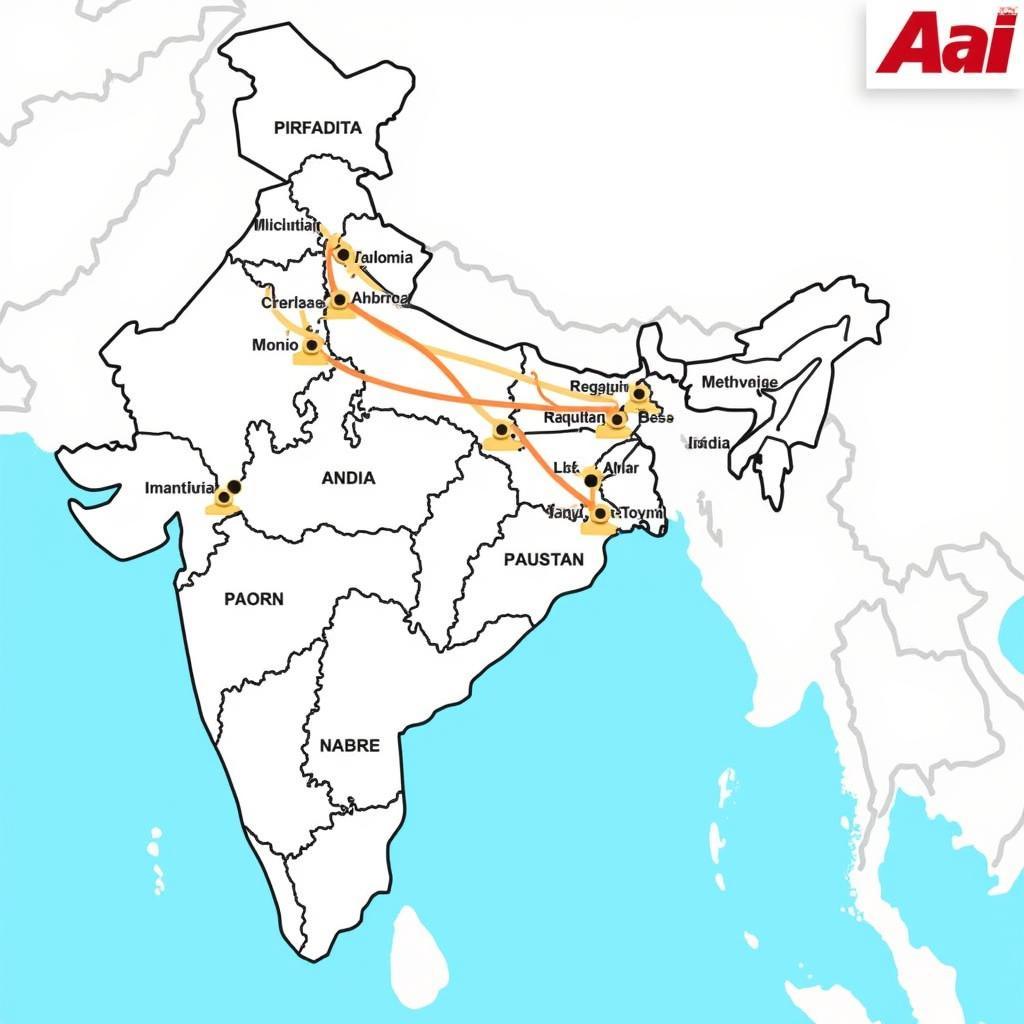The phrase “124 Airports 680 Aai” offers a glimpse into the vast network of airports managed by the Airports Authority of India (AAI). This article delves into the significance of these numbers, exploring the role of AAI in developing and maintaining India’s aviation infrastructure.
 India's airport network map
India's airport network map
Understanding AAI and Its Role
The Airports Authority of India (AAI) is a statutory body established in 1995 under the Ministry of Civil Aviation, Government of India. It is responsible for creating, upgrading, maintaining, and managing civil airport infrastructure in India.
The Significance of 124 Airports
The number 124 represents the total number of airports directly controlled by AAI across India. These airports vary in size and capacity, encompassing:
- International Airports: Serving as gateways to and from India, these airports handle international flights and play a crucial role in connecting India to the world.
- Domestic Airports: Facilitating air travel within the country, these airports connect major cities and towns, boosting regional connectivity.
- Custom Airports: Handling the movement of goods and cargo, these airports contribute significantly to India’s trade and commerce.
 Modern airport infrastructure managed by AAI
Modern airport infrastructure managed by AAI
What Does 680 Represent?
While “124 airports” is straightforward, the meaning of “680” in relation to AAI requires further exploration. It is not officially recognized in the context of AAI’s operational statistics. It’s possible that the number refers to a specific data point related to AAI’s activities, such as:
- Total Number of Landing Facilities: This could include airstrips, heliports, or smaller aviation facilities under AAI’s purview.
- Number of Operational Navigational Aids: AAI manages a vast network of navigational aids across the country, ensuring safe and efficient air traffic movement.
- Total Workforce: Considering the scale of AAI’s operations, “680” might represent a segment of their workforce dedicated to a specific function.
AAI’s Contribution to Indian Aviation
AAI’s role in developing and maintaining India’s aviation landscape is critical for several reasons:
- Connectivity and Accessibility: AAI’s network of airports improves connectivity between different parts of India, making air travel accessible to a larger population.
- Economic Growth: Efficient air transport facilitates trade, tourism, and investment, contributing significantly to India’s economic growth.
- Job Creation: The aviation sector, fueled by AAI’s infrastructure development, creates numerous job opportunities in various areas, from airport operations to airlines and tourism.
- Regional Development: Connecting remote areas through air travel fosters regional development by boosting tourism, creating employment opportunities, and improving access to essential services.
 AAI air traffic control operations
AAI air traffic control operations
The Future of AAI and India’s Aviation Sector
AAI is continuously working towards modernizing existing airports and developing new ones to meet the growing demands of air travel in India. Key focus areas include:
- Capacity Expansion: Upgrading existing airport infrastructure and constructing new terminals and runways to accommodate increasing passenger traffic.
- Technological Advancements: Implementing cutting-edge technology in air traffic management, security systems, and passenger handling processes to enhance efficiency and safety.
- Sustainable Aviation: Promoting eco-friendly practices in airport operations to minimize the environmental impact of the aviation industry.
Conclusion
The numbers “124 airports 680 AAI” highlight the extensive scope of AAI’s operations and their vital role in shaping India’s aviation landscape. As India’s economy continues to grow, AAI’s continuous efforts in developing and maintaining a robust and efficient aviation network will be crucial in connecting people, places, and possibilities.

